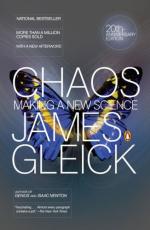
|
| Name: _________________________ | Period: ___________________ |
This quiz consists of 5 multiple choice and 5 short answer questions through chapters 9-11.
Multiple Choice Questions
1. Where is Bernardo Huberman originally from?
(a) Brazil.
(b) Argentina.
(c) Ecuador.
(d) Peru.
2. When was the book Spacetime, Geometry, Cosmology published?
(a) 1974.
(b) 1972.
(c) 1980.
(d) 1977.
3. Who is attributed with the following quote in Chapter 4, "A Geometry of Nature": "And yet relation appears, a small relation expanding like the shade of a cloud on sand, a shape on the side of the hill"?
(a) Robert May.
(b) James Yorke.
(c) Enrico Fermi.
(d) Wallace Stevens.
4. Who is attributed with the following quote from Chapter 6, "Universality": "The iterating of these lines brings gold; the framing of this circle on the ground brings whirlwinds, tempests, thunder and lightning"?
(a) Johann Wolfgang von Goethe.
(b) Lewis F. Richardson.
(c) Dr. Faustus.
(d) Mitchell Feigenbaum.
5. When did Albert Libchaber join the faculty at The Rockefeller University?
(a) 1982.
(b) 1985.
(c) 1989.
(d) 1994.
Short Answer Questions
1. The University of California, Santa Cruz is one of how many campuses in the University of California?
2. What does Gleick assert was the inspiration for Archimedes in Chapter 2, "Revolution"?
3. What notable phrase is Norman Packard attributed with coining?
4. What is the atomic number of helium?
5. Where is Michael Barnsley from?
|
This section contains 194 words (approx. 1 page at 300 words per page) |

|




